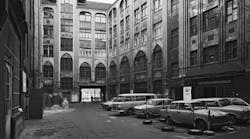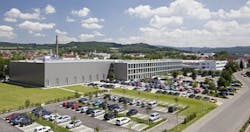We visited Volkswagen headquarters and manufacturing plant in Wolfsburg and Koenig & Bauer AG, a manufacturer of printing machines in Wurzburg. Their new machines use a continuous web of paper that shoots through the machine at an astounding 12 m/sec (27 mph) while maintaining a printing resolution of 0.050 mm.
But what really blew me away was what I learned at EMAG Mfg. GmbH, in Salach, in the former East Germany. Some of the manufacturing methods they used were completely new to me, but the big news was their boost in productivity. Manfred Hekeler, the marketing communications manager, proudly informed us that the average turnaround to produce a typical vertical machining center was about five weeks. Then he mentioned that this was a dramatic improvement in productivity over what it had been prior to the reunification of Germany. How dramatic? Previously, it took five years to put out a machine! And he said that was pretty good; citizens generally had to wait 12 years for a new car. Needless to say, once your new car arrived, you went out to order its replacement the very next day.
Mr. Hekeler explained that under the old system of working for the government, there was no competition, so there was little incentive to improve productivity or quality. But it wasn’t EMAG’s fault. Their suppliers worked for the government too, so it was not uncommon to wait months for parts that should've been available in a few days. Nonetheless, once EMAG entered the free market, company officials quickly realized that in order to survive, they would have to upgrade their operations to world-class standards — and fast. They did, and my hat goes off to them. Their success is as much a tribute to their resourcefulness as it is to the value of the free-enterprise system.
UPDATE: I found a website containing images photographer Stefan Kopelkamm took while in the former East Germany in 1990. He returned more than ten years later and photographed the same bulidings again, much of which had been renovated. You can see the before-and-after shots on the website by clicking here.


